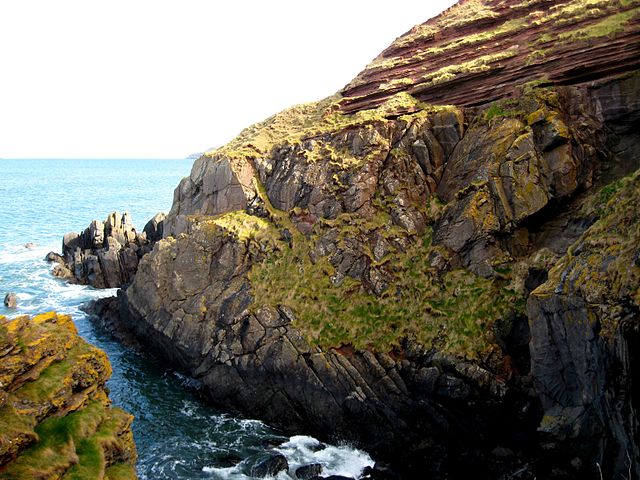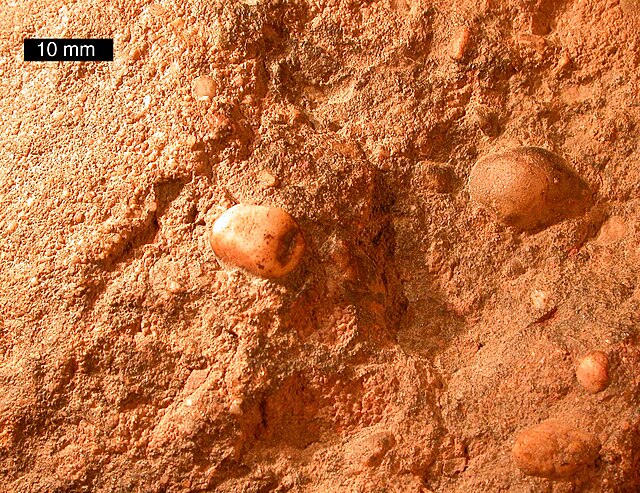Old Red Sandstone, abbreviated ORS, is an assemblage of rocks in the North Atlantic region largely of Devonian age. It extends in the east across Great Britain, Ireland and Norway, and in the west along the eastern seaboard of North America. It also extends northwards into Greenland and Svalbard. These areas were a part of the paleocontinent of Euramerica (Laurussia). In Britain it is a lithostratigraphic unit to which stratigraphers accord supergroup status and which is of considerable importance to early paleontology. The presence of Old in the name is to distinguish the sequence from the younger New Red Sandstone which also occurs widely throughout Britain.
Folded Old Red Sandstone rock formation at St Ann's Head in Pembrokeshire, Wales
Hutton's angular unconformity at Siccar Point where 370-million-year-old Devonian Old Red Sandstone overlies 435-million-year-old Silurian greywacke.
Bedding plane of Old Red Sandstone with quartz and chert pebbles, central England; scale bar is 10 mm
Old Red Sandstone at Gardenstown, Aberdeenshire
The Devonian is a geologic period and system of the Paleozoic era during the Phanerozoic eon, spanning 60.3 million years from the end of the preceding Silurian period at 419.2 million years ago (Ma), to the beginning of the succeeding Carboniferous period at 358.9 Ma. It is named after Devon, South West England, where rocks from this period were first studied.
The rocks of Lummaton Quarry in Torquay in Devon played an early role in defining the Devonian Period
Diorama of a Devonian seafloor
Prototaxites milwaukeensis, a large fungus, initially thought to be a marine alga, from the Middle Devonian of Wisconsin
The Devonian Period marks the beginning of extensive land colonization by plants. With large land-dwelling herbivores not yet present, large forests grew and shaped the landscape.








